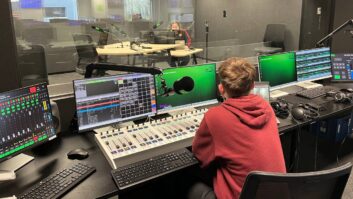Jan. 7, 2011 was a difficult day at Hmong-language station KJAY 1430 AM in Sacramento, Calif. The staff had learned that after a year in the hospital, Vang Pao had passed away the day before from pneumonia and cardiac complications.
As a major general in the Royal Lao Army, Vang had led the CIA-supported fight against communist Pathet Lao forces. In 1975, after 15 years of fighting a “secret war” tangent to the combat in neighboring Vietnam, he led the exodus of his people out of Laos to freedom and safety in America, where he became a visible, beloved and sometimes controversial leader of the U.S. Hmong community.
“I was working at the station that day. The hosts were coming into the station hour after hour and going on air, as usual,” said Tiffany Powell, KJAY’s station manager.
“On normal days, they arrived fresh and happy. That day, the male hosts arrived exhausted, sad and not as bright and cheerful as usual. They looked like they had been awake all night long. Vang Pao’s dying wasn’t instantaneous. It was a sad day at the station.”
Though Powell does not speak Hmong, she said, “Their words seemed heavy over the air.”
No doubt the air was also heavy at other radio stations that carry Hmong-language programming, such as KBIF(AM) in Fresno, Calif., and KSRM(AM) in Minneapolis, as well in the hearts of the approximately 370,000 Hmong who call California, Wisconsin and Minnesota home today.
Wisconsin alone has three stations that carry substantial Hmong-language programming: WIXK(AM) in New Richmond, WORT(FM) in Madison and WNRB(LP) in Wausau.
In California, where approximately 107,000 Hmong reside, the origin of the state’s two Hmong-language stations is a fascinating story.
“Around the mid-1990s, a Hmong gentleman came to the station and asked if he could rent some airtime to share with his community,” Powell said. “That was the start of Hmong radio on KJAY.”
That gentleman was TerFong Yang, who became KJAY’s first Hmong announcer, and only recently hung up his KJAY headphones.
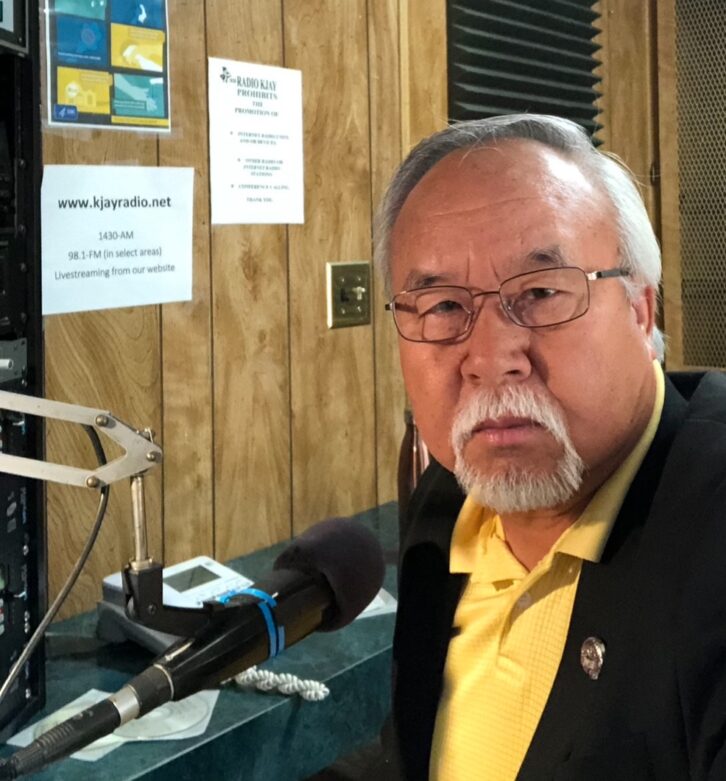
He facilitated what he called “the only way we could connect to our local businesses and our community. We broadcast local and international news, especially from back home in Laos and Thailand. That was the news most Hmong wanted to hear. Radio is important to the Hmong people.”
KJAY — now also heard on an FM translator at 98.1 — has been a family concern ever since the mid-1960s, when Powell’s late father Jack bought the AM station. It later went through several changes in format.
“How did a small 500-watt daytime radio station keep going?” Powell asked. “Following Dad’s example, we had to change with the times. Since 1965, Dad changed the format as he deemed necessary. At some point we were a religious station. Then we were a country station,” she said.
“When I was a teen, we played pop music. When my older sister was a teen, she would be tasked with going to the bus station downtown and receiving LP albums from a gentleman who had just traveled to Sacramento from Detroit. KJAY might have brought Motown to Sacramento — not sure about that, but it could be true,” she added.
With 15,000 survivors of the secret war in Laos then residing in California’s capital, Tiffany’s father saw the need to service the Hmong, many of whom did not speak English. Sacramento then was the city with the state’s second-largest Hmong population, just behind Fresno. Today, Sacramento has just under 27,000, and Fresno has an estimated 35,000.
“I was one of the first deejays on the air on Saturday mornings at KJAY, one day a week from 5 to 6 a.m.,” recalled Kao Xiong.
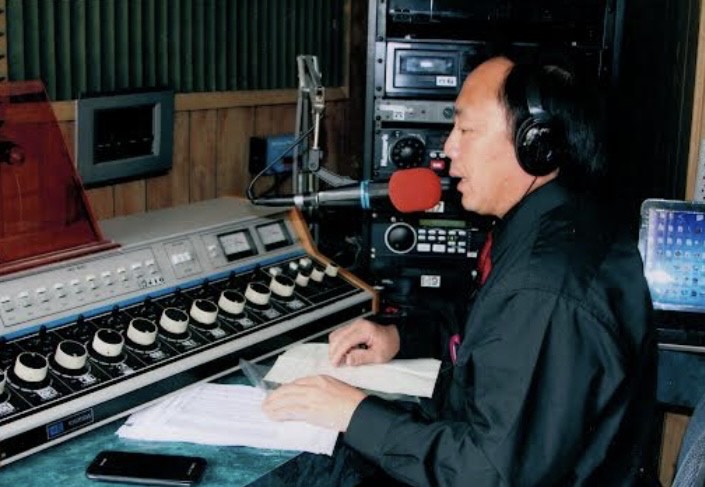
“In April 1995, every Hmong family in Sacramento bought a radio. Our one day on the air made every Hmong person think of the Long Tieng Lao Huaphau Radio station in Laos before 1975. Hmong voices on the air have been very important. They reflect the past when Laos was lost to communism. They refresh Hmong seniors’ mindset about the way they have suffered as refugees with no permanent place to live. They also promote Hmong businesses, spread Hmong news and promote Hmong culture and education.”
Today, according to its website, the station plays Hmong programming from 9 a.m. to 8 p.m. each weekday. Programming also includes Russian music in the mornings and old-time radio programming overnight.
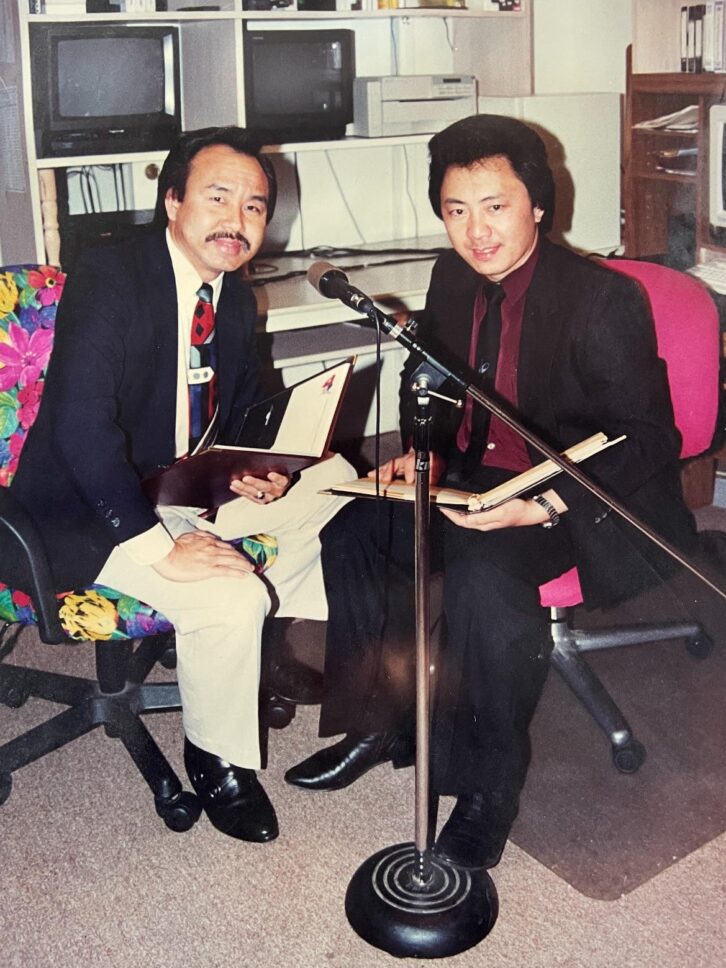
Running a Hmong-language radio station has presented a series of challenges, not the least of which was the pandemic.
“When Covid came in 2020, some hosts had to quit their show, which I completely understood. The hosts had their day jobs or business, and some people lost their jobs. Money wasn’t running as freely as before,” Powell said.
“We are still recovering financially from the Covid pandemic. Fortunately, our overhead costs are low. Also, being a locally owned station, we have the flexibility to pivot and adapt as necessary.”
KBIF
The other California-based Hmong-language station is KBIF(AM) 900 in Fresno.
In the 1980s, owner Cascade Broadcasting started adding ethnic programming to the station’s religious content. In 1994 it put Hmong programming on the schedule on weekday evenings.
Gore-Overgaard Broadcasting acquired KBIF in 1998 and continued with its format. It later moved religion to a sister station and expanded the Hmong programming to be heard all week, with Punjabi on the weekends.
“Hmong programming increased in popularity. It was like a snowballing effect,” said Tony Donato, the station’s general and operations manager.
The station sought to appeal to the younger generation. “We focused on Gen Xers. We played American Hmong music. The Fresno Bee [newspaper] ran a story about teen suicide in the Hmong community. They were having trouble adapting to our culture, and so we wanted to connect with the younger Hmong generation,” he recalled.
He feels that announcers doing giveaways, remote broadcasts and interacting with social media have helped the audience expand.
Moua Vang began working part-time for KBIF in 1999 and in 2005 became the full-time program director.
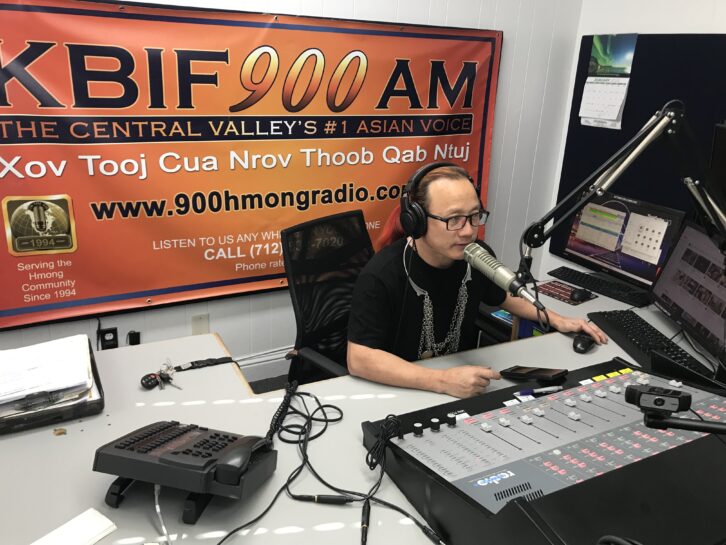
“KBIF Radio has been the main resource to provide information that is important to the Hmong community of the Central Valley. We get out information, news and services that are available to our community,” Vang said.
“We are proud to continue to provide entertainment, news and cultural programming going on 31 years, even with the competition of social media.”
In 2014 Gore-Overgaard Broadcasting sold the station to what became Overgaard Broadcasting, which in turn was sold to Punjabi American Media last year. The station continues to serve the Hmong and Punjabi communities.
From the early years, KBIF produced what it thought the community liked to hear: current events, interviews with city council members, Hmong sheriff’s deputies talking about crime.
“Everybody knows us,” Donato said. “We ask, ‘Have you heard of us?’ ‘Oh yeah! I used to listen to you when I was a kid,’ they answer. It’s great to be able to see what we’ve done.”
Donato feels that KBIF’s success is its longevity. Although the station has carried advertising with familiar brands such as Toyota and Wells Fargo, “We don’t use ratings. History is not a book with ratings.”
KBIF has faced its challenges, said Donato, who started working at the station when he was in high school and has stayed with it for 45 years. But it has met those challenges.
“It was quite a run before we had internet access to program and get music. We had talk shows, [but] it was very hard to find Hmong music,” Donato said.
“It’s been a challenge finding employees to translate and write news, and to understand the broadcast industry,” Donato said. “We’ve had to train 70 percent of the staff from the ground up over the years.” Though he doesn’t speak the language, he helped with production and tried to follow along. “I was in radio school at Fresno State and working at the station at the same time.”
As with KJAY, the pandemic hit KBIF hard.
“We had ad campaigns for Covid that stressed, ‘Wear your mask,’ ‘Wash your hands,’ and ‘The vaccines are coming,’” Donato remembered.
Being a brokered station has helped KBIF. “Advertisers sell real estate in Hmong,” he said.
The station sells hour-long blocks of time to be broadcast Monday through Friday. Hosts can go out into the community to secure sponsors. They program shows not only in Hmong but in Korean, Armenian, Russian and Punjabi.
Hopes and concerns
As for the future of Hmong-language radio, Tony Donato’s outlook is upbeat. He said social media, live streaming and smartphones have helped the station expand its reach. Still, he worries, “Is there going to continue to be an audience?”
Robert Yang, a retired Sacramento businessman and political consultant, said, “I am so proud when I turn on the radio and I hear a Hmong voice coming from the other end.
“I have used radio advertising for business and political clients in the past, and it was very effective at reaching listeners that do not speak or understand English well. Broadcasting in Hmong helps the community get information about services, events or businesses that they would not be able to get from traditional radio programs,” he said.
“Some Hmong radio programs are strictly entertainment and it brings a sense of nostalgia. Most of the listeners are those that don’t speak English well that came here from Laos. Radio broadcasting is doing a great service for these people.”
About the future, says KJAY’s Tiffany Powell, “We invite a plurality of voices. All are invited to join the KJAY family. We would like all sectors of the Hmong community to be represented on KJAY Radio.”
Comment on this or any article. Email [email protected].






